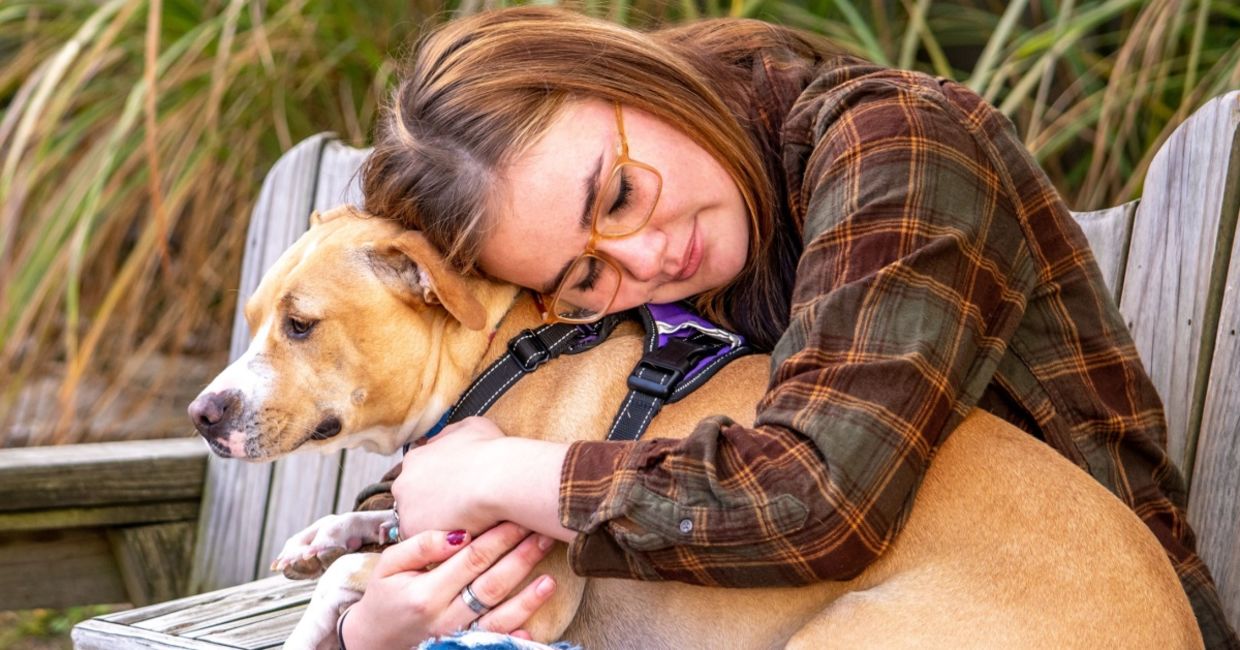
(Susan B Sheldon / Shutterstock.com)
Dogs have served as man’s best friend for thousands of years. They have been guardians, herders, hunters, and beloved companions for generations upon generations. In modern times, they are often considered part of the family.
However, there are still some dogs with jobs to do, from emotional support dogs to airport-sniffing dogs. Some dogs are service dogs for people who are blind, deaf, or have other medical conditions. But some dogs are working dogs due to their sniffing ability.
Now, a recent study, published in Frontiers in Allergy has indicated that dogs could potentially sniff out trauma, a development that could change the lives of many people living with post traumatic stress (PTSD).The study was conducted at Dalhousie University in Canada.
Proof of Concept
According to Dalhousie University News, dogs have already been proven to be able to detect a number of medical conditions before they occur, such as seizures or hypoglycemia in diabetics. In addition, service dogs have already been trained to recognize the physical and behavioral cues of distress in people with PTSD, and can help keep their humans safe and calm.
However, the study has provided proof of concept that there are some dogs that can actually smell human distress just by sniffing their breath.
Callie and Ivy
The hero dogs at the center of this story are Callie and Ivy. “Both Ivy and Callie found this work inherently motivating,” Dr. Laura Kiiroja, of Dalhousie University’s Department of Psychology and Neuroscience, and one of the lead authors of the study, told Dalhousie University News.
“Their limitless appetite for delicious treats was also an asset! In fact, it was much harder to convince them to take a break than to commence work! Callie in particular made sure there was no dilly-dallying.”
The two dogs were tasked with distinguishing between face masks that had been worn by 26 people with PTSD, reported New Atlas. Half of the masks were worn when they were relaxed, and the other when they were thinking about their trauma.
Callie was able to distinguish between the two types of masks a whopping 81 percent of the time, while Ivy was accurate 74 percent of the time. Interestingly enough, the two dogs seemed to pick up on different aspects of distress. Callie seemed to smell hormones related to shame, such as cortisol, while Ivy seemed attuned to hormones related to anxiety, like adrenaline.
Now that the concept has been proven, according to Dalhousie University News, the researchers are planning on developing their research further by using larger sample sizes, and a broader range of distressing memories for the dogs to sniff out.
Many dog owners can attest to the fact that their pets seem sensitive to their feelings. This study validates the anecdotal evidence. But even more importantly, it means that now service dogs may be able to be trained to help their humans even further, by making them aware of impending distress before it hits. This is just one more of the myriad ways in which dogs are truly humanity’s best friend.
YOU MIGHT ALSO LIKE:
Service Animals Work Hard to Help People with Disabilities
Paws of Positivity: Specially Trained Dogs Lift Spirits in Israel
Dogs Can Detect Lung Cancer With 97% Accuracy in New Study







